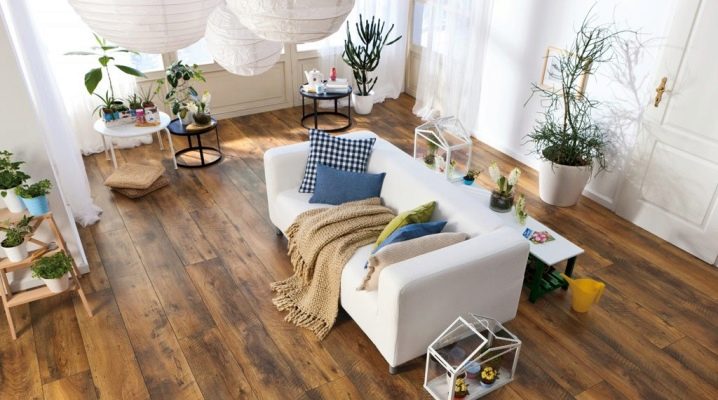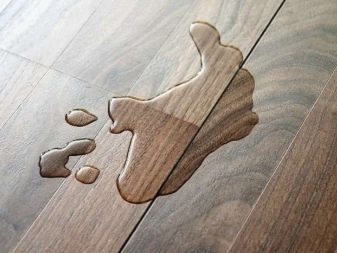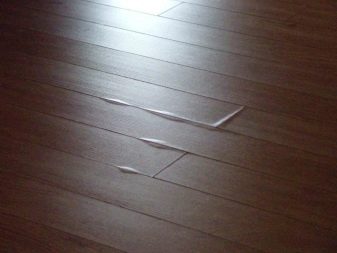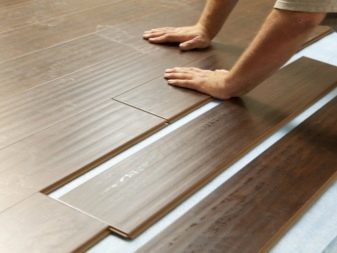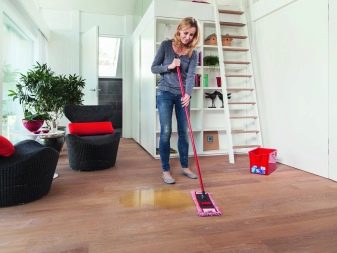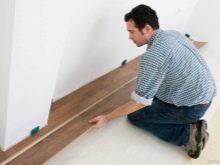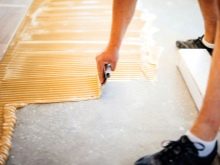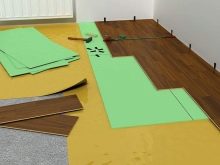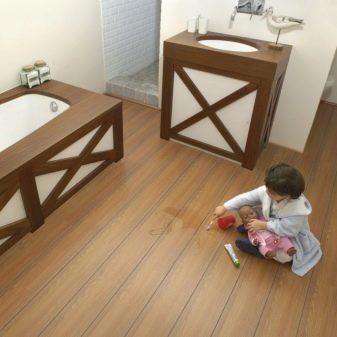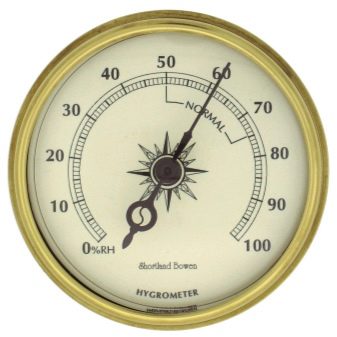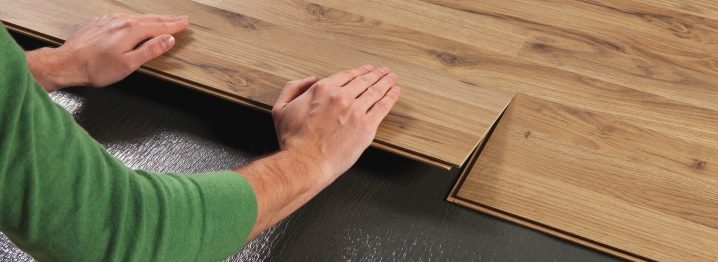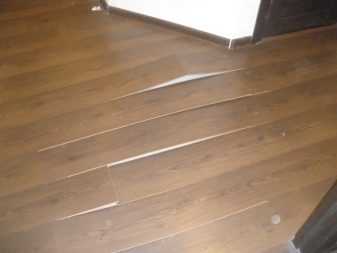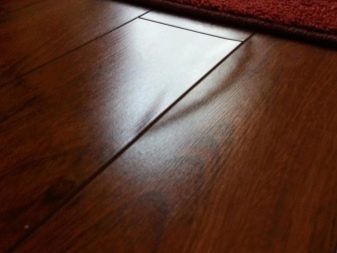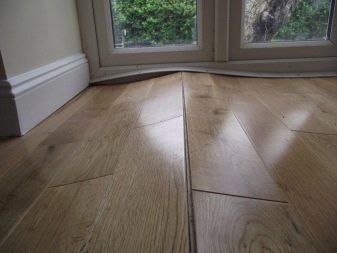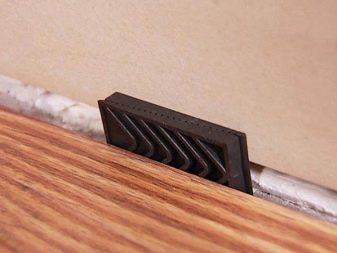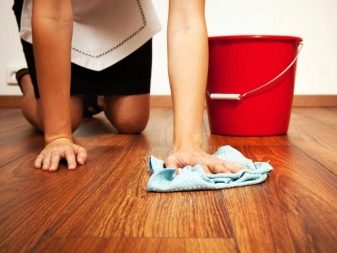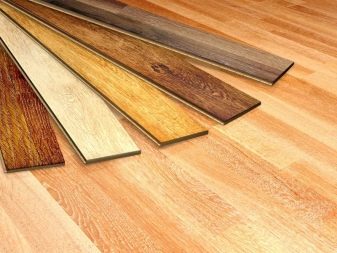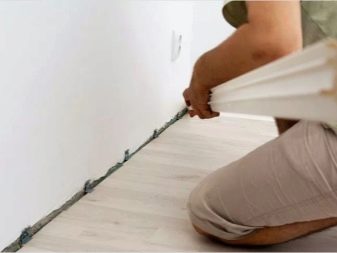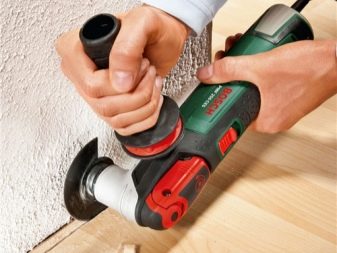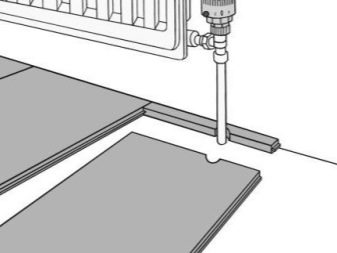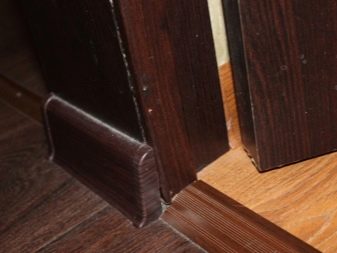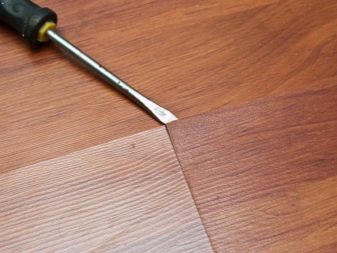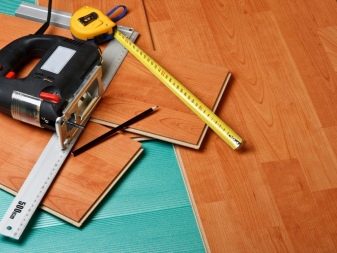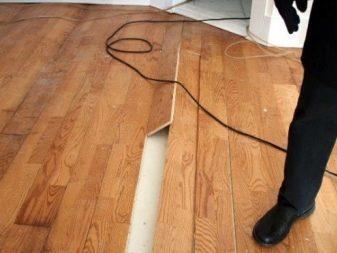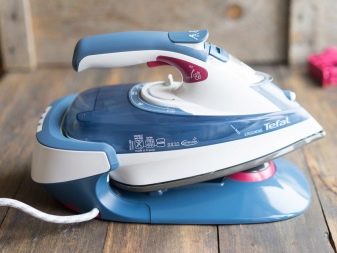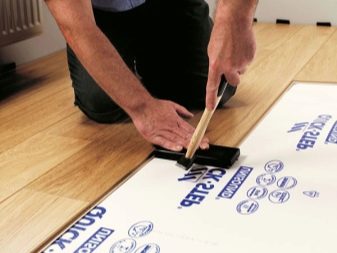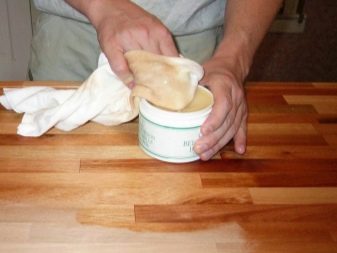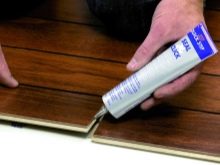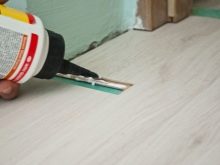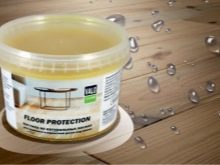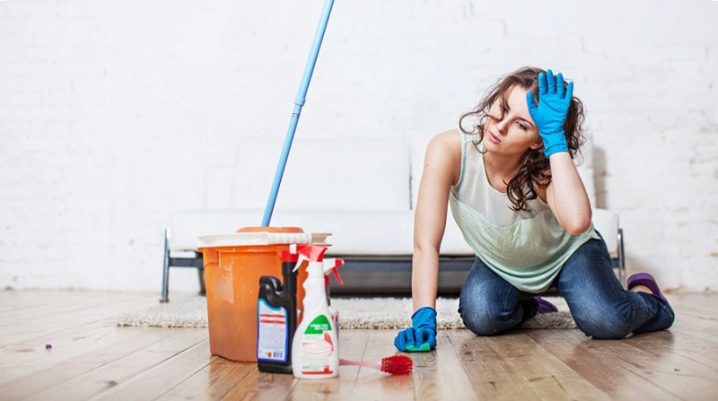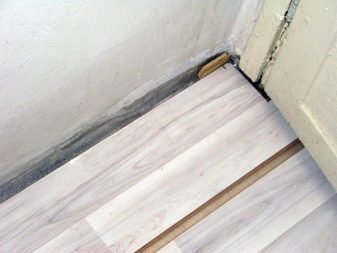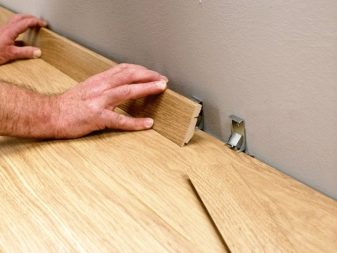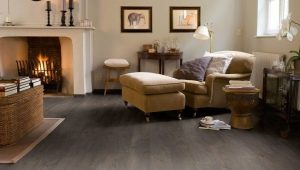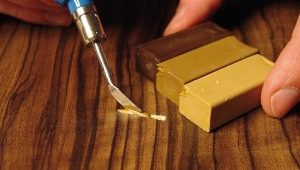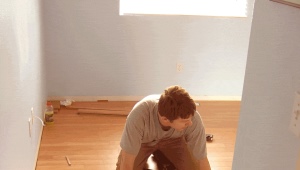How to fix a swollen laminate without disassembling?
Laminated flooring is an excellent choice for home, combining both aesthetic qualities and ease of use. Laminate has a huge selection of colors, shades and textures. And the installation is relatively simple and takes a little time. However, there may be problems that cause bloating.
Why laminate can swell?
Like any other flooring, laminate under the influence of certain factors can deform. The main reasons for the swelling of the laminated coating are errors in the installation process, ingress and long-term preservation of the liquid under the floor, the quality of the product itself. therefore First, it is important to clearly define the nature of the defect.
Deficiencies in the installation process
The reasons may be:
- Lack of compensation gap. The composition of the laminate includes natural wood raw material, which is able to expand and contract depending on the ambient temperature and humidity.Under the influence of humidity, the laminate expands and abuts against the wall, as a result, individual strips from the pressure rise and take on a characteristic form in the form of waves.
- High residual moisture base. For each type of base there is its own residual moisture rate: 4% - floor slabs, 5% - cement-sand screeds, 12% - wooden, plywood or chipboard base.
- The substrate layer is too thick. Quite often, in order to save money, a substrate rolled up in several layers is used to level the floor. Because of this, the floor seems to spring under your feet, and the joints of the locks begin to creak, stagger, crumble, and eventually break.
Fluid entry and storage
These include:
- Contact with fluid interface. It should be remembered that the laminate can deteriorate from an ordinary spilled cup of tea or coffee. It is important to quickly collect the liquid with a cloth. If the contact was long, then the appearance of defects is inevitable. Externally, the defects are uneven, localized and resemble a tumor. That is why it is necessary to carry out timely prevention and apply a special water-repellent polish or wax to the laminate.
- Increase in relative air humidity. A standard coating can perfectly exist at a relative humidity of 40% - 60%. However, if this figure is higher, then it is necessary to choose a more stable material with a plate density of at least 800 kg / m3, a liquid suction ratio of no more than 7% and use special water-repellent compositions when working.
Poor laminate quality
These include:
- Low density of bearing boardsup to a maximum of 700 kg / m3. To check the material, you can try to bend it and scratch the junction of the lock. A good stove when feeling different density and strength. Structurally, it is homogeneous, does not spring and does not break under physical impact, for example, by pressing with a finger.
- Weak protective coatingwhich is easily removed, prone to the formation of scratches and other damage. The surest way to check - is to put the bar on the floor and walk along it, you can jump a little. After carefully inspect the protective layer. If it remains intact, then the laminate will be resistant to stress and physical stress, and will also last for many years.
- Poor quality lock connections. It is necessary to connect the two straps, normally they should connect with a characteristic click and with additional effort. If the joints are too soft or uneven, then they are very simply sealed and just as easily broken.
If the seam or joint between the panels is bulged, the following reasons are assumed:
- wrong substrate thickness;
- poor installation, due to which the seam turned out too wide, and the connection itself is loose;
- poor quality laminate;
- use when laying two different types of laminate that do not match each other in thickness;
- liquid ingested.
Causes of undulatory swelling:
- temperature effect on the coating, the absence of a compensation seam;
- docking straps attached too tightly to the panel, leaving no extra space.
Swelling and deformation of the seam between the panels may indicate the presence or ingress of excessive moisture. This may also happen if during a wet cleaning the cloth was not sufficiently squeezed out, and the liquid accumulated in the joint area.
The reason may be a thick substrate and the poor quality of the material itself.
Ways to troubleshoot the problem
It is possible to fix the coating without disassembly and conventional restoration, however, sometimes the replacement of the slats cannot be avoided. It all depends on the quality of the floor.
Missing expansion joints can be cut independently with an electric jigsaw. Proper clearances should be completely closed with a floor plinth. It is necessary:
- dismantle the floor plinth;
- we define sites which rest against a wall;
- edging, leaving gaps of about 20 mm, taking into account the width of the plinth.
It is equally important to correctly calculate the distance from the heating pipes to the coating. If the laminate began to creep because of the door retainers, then they need to be attached to the floor screed itself.
If the reason is the residual moisture of the base, then the laminate will have to be disassembled. This is necessary in order to further dry it in a dry, well-ventilated area. After drying, just collect it back. However, the joints of the locks tend to stretch, so when removing all the strips, it is better to number them in order to assemble them in the order in which they went initially.
Unfortunately, incorrectly made backing ensures that the locks are already broken. This means that the damaged area will have to be dismantled and replaced with new strips and a new layer of bedding. Buy more strips better from the same party. The best solution would be a complete change of the substrate, because defects can form again, but in other places.
If the laminate is wet, then it must be thoroughly dried. It is necessary to remove the panel and wait for complete drying, if after drying the defect has not disappeared, then we replace the panels. An emergency place of water ingress can be “ironed out” with a hot iron, but this method refers to the folk and does not guarantee the presence of a positive result. Modern laminate flooring involves partial removal of panels. without the need to parse the series completely. Quality material during this time is able to return its original appearance and get into place.
If the fluid volume was large, it is better to raise the slats and check for the presence of fluid under the floor. It is important to dry not only the slats, but also the substrate, and then re-assemble the floor. Often these actions are enough to save coverage.
If a long time has passed since the flood and the defect persists, it is necessary to replace it.
Professional Tips
It is much easier to avoid the formation of defects than to eliminate them. Prevention of bloating:
- If the owner wants to install the laminate on her own, before that it is better to consult with experts and watch video tutorials to prevent typical mistakes.
- If you hire a wizard, you must read the reviews of the work done, the duration of the proposed work, experience in the field of construction.
- You should not save on the quality of the material. A good laminate is easier to lay and during operation it will last much longer. The most expensive models are able to stay in the water for up to two hours without harm to themselves.
- Be sure to use protective wax and polish. Protection against water is mandatory in bathrooms and kitchens.
Waterproofing compositions and accessories:
- glue. You can buy it immediately when you buy a laminate. It is better to additionally glue the seams of the locks for additional protection. This should be done quickly and without delay, as modern glue dries very quickly;
- wax-based impregnation. It is necessary to wipe it all the joints on the front side and with the help of a sponge or brush to handle the entire floor.Excess can be easily removed with a dry cloth. This will serve as protection during wet cleaning or in case of accidental ingress of a small amount of liquid;
- sealant. We process the seams on the inside of the floor, the excess is immediately removed with a dry cloth;
- film. Properly and evenly glued protective film will protect the floor from moisture. Secure it with the front side;
- waxing. Held twice a second time after drying the first layer. To wax the floor should be 10 hours after sanding the floor.
Most importantly, when laying the flooring the floor must be dry.
It is also important to properly care for the laminate, to extend the life and prevent premature destruction:
- Do not wash the laminate with ammonia or abrasive detergents;
- it is impossible to constantly affect the coating with detergents;
- liquid, acid or hot water requires quick action and urgent removal;
- protection against mechanical damage.
In order to fix the problem, you need to find the cause. First you need to make sure that there is a compensation gap, for this we dismantle the floor plinth and inspect the floor around the perimeter.If there is a gap, then disassemble the place of swelling and inspect for the presence of moisture.
If water is the cause, then changing the substrate is a must. Lamella first need to be dried, if the material is of high quality, then it will take the same look and dimensions. After it is important to polish and treat with protective agents the place where the replacement was made.
How to cut the laminate against the wall, if there was a deformation of the coating, see the following video.
